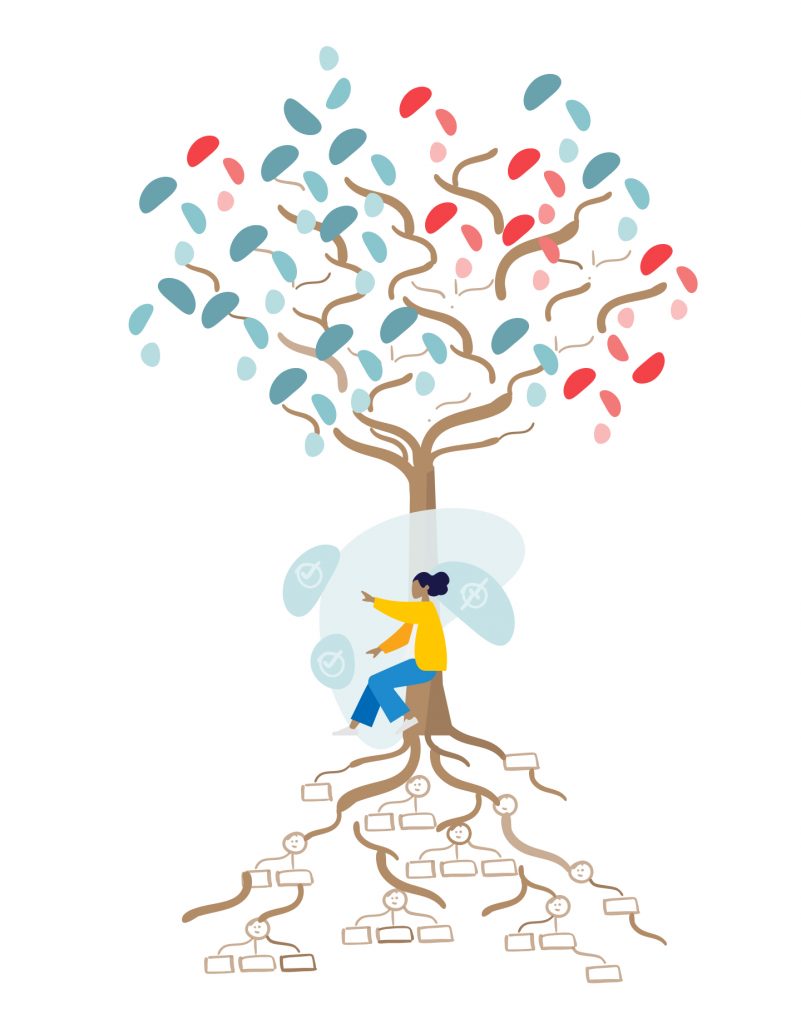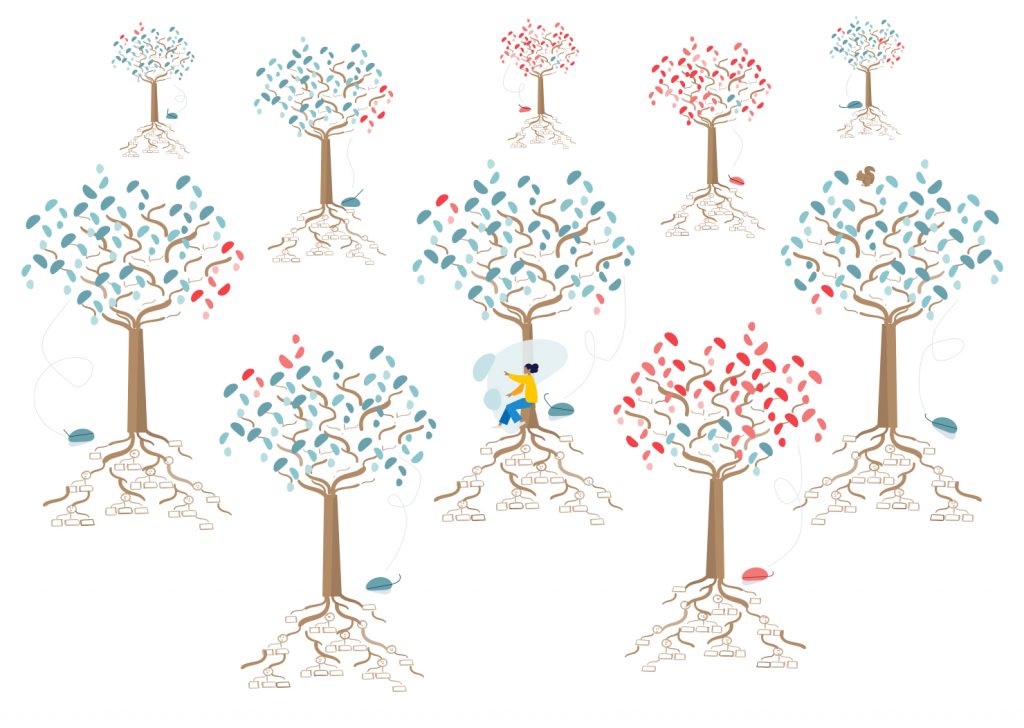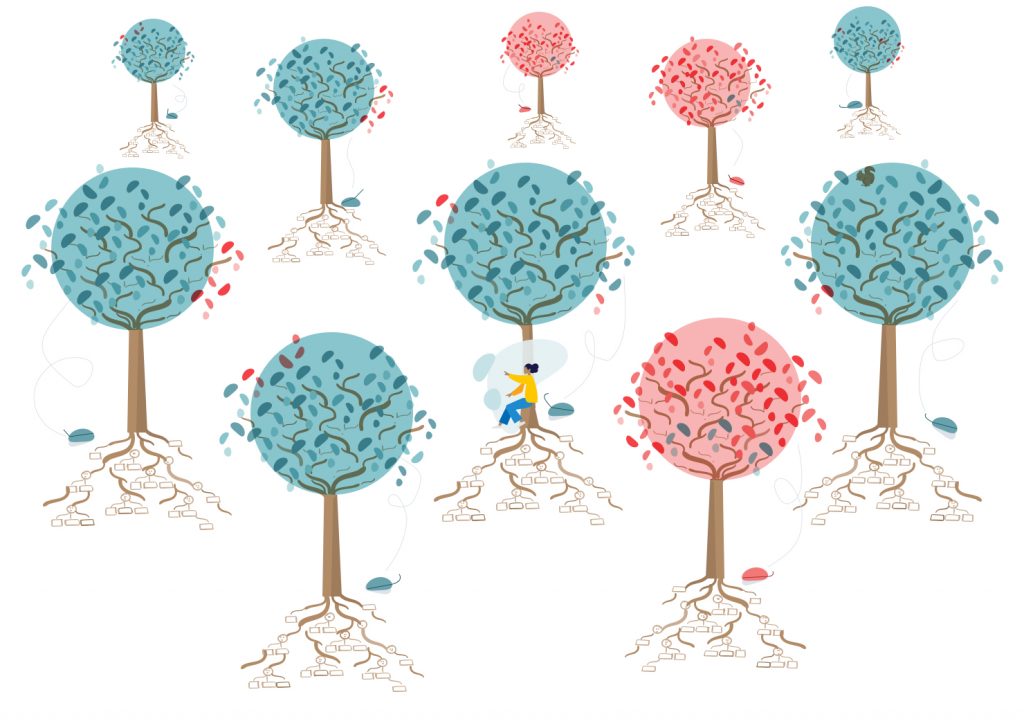Meet our perfect donor
Imagine Johanna: young, energetic, smart and generally interested in what goes on around her. But one thing concerns her: pollution, especially the pollution of the world’s water supply. One day she decides, she needs to do her part in order to combat this pollution. During her research, she finds the organisation committed to combating the pollution of the oceans. Impressed by the profile and online presence, she decides to subscribe to the newsletter. Over the following weeks, she gets more insight into the organisation’s work and through her interaction with, for example, it’s social media platforms, the organisation also gets to know Johanna a little better. Therefore, the messages she receives from the organisation become more adjusted to her individual interests. At some point, the organisation will ask her for a donation. Since the online communication is convincing and Johanna wants to do her part, she decides to support the organisation by donating some money. However every organisation depends on reliable and plannable income, so Johanna eventually becomes a regular donor. Up to this point, everything sounds simple enough: The organisation’s communication channels helped to acquire and develop a regular donor. But what do we do once our donors agree to commit to us for longer? How do we keep donors engaged and most importantly how can we identify whether a donor wants to continue to support us or not? This is where machine learning comes into play. Through the collection and categorization of donor data, it is possible to make predictions about how your donors, including Johanna, will probably react in the future. Machine learning can help you calculate the probability of whether a donor is going to continue to support your organisation or not. In other words, it helps us to make predictions about the churn rate of donors, the rate of people likely to stop donating.
How can we use machine learning to predict donor churn?
One of the most common and successful models used for (supervised) machine learning is a random forest, which is based on so-called decision trees. Let’s imagine Johanna is standing in front of a tree, a symbolic, prophetic tree that decides whether Johanna will remain a donor or not. For its prophecy, the tree scans Johanna’s data and its roots dig deep into her data and feed on it. Once the information is acquired it travels up through the tree and its different branches, representing different possible analytical pathways. Each individual branch stands for a distinct analysis of a portion of the data. One branch, for example, scrutinizes how often Johanna opened her emails in the past three months, while another branch checks if Johanna’s credit card will expire in the next six months. The more data the tree feeds on, the more branches will split off the tree’s trunk. Finally, the data feeding the tree and the branches will cause leaves to sprout. Since the tree has prophetic qualities, the leaves will be of different colours. A green leaf stands for a positive answer, signifying that Johanna will continue her support for the organisation. A red leaf, on the other hand, represents a negative outcome and indicates that Johanna is likely to leave the organisation. The tree will drop one leaf which fits Johanna’s data best and this will represent the tree’s prophetic decision.


Now, in the world of data, prophetic trees are nothing out of the ordinary and a multitude of them can grow at any time, which then forms what is called a random forest. In fact, several trees feed on Johanna’s data at the same time and analyse different information about her.


If you want to predict her future behaviour as precisely as possible, you need to look at the different prophetic leaves that fell off the different trees. Collecting all of those leaves in the random forest in order to aggregate the different prophecies will give you one final and more accurate answer.


Trees and leaves? But how likely is it that Johanna is going to
stay a donor?
This concept can be translated into a percentage calculation. In fact,
machine learning defines by itself, from collected data, which trees are
important and should be added to a Johanna’s specific random forest. Then it collects all the necessary and prophetic leaves in order to turn them into a
probability percentage. It is important to note that machine learning is not applied punctually. It gathers, analyses, evaluates data continuously and in real-time. Thus, once you are able to use machine learning to scrutinize
donor behaviour, you can use the probabilities or predictions made by it to
adapt your communication in a way that every donor gets the right message, at the right moment and if necessary over the right channel too. This can best be achieved with the use of a marketing automation
tool, where you can introduce the findings from machine learning in order to adapt your messages to different donors at risk of halting their support. On
top of knowing who needs to be addressed with more caution, machine learning
now provides an automatized and self-updating solution for uncertain
donors. Let’s come back to Johanna: We gathered all the leaves that might indicate whether she is at risk of halting her contributions to the organization. You realized that her pile of red leaves is higher than her pile of green leaves, which means that she is at risk of halting her donations. In other terms her churn rate or the probability percentage calculated through machine learning is high and once she crosses a certain threshold your marketing automation tool is told to send out an (automated) email containing, for example, a “Thank you for your support” message to Johanna. This concept gets more interesting when we realize that contrary to human’s machine learning algorithms do not tend to get lost in the woods and can, therefore, create ever bigger random forests able to analyse ever-growing amounts of data. The resulting possibilities for predictive measures are countless. Next to predicting the behaviour of existing or even possible donors, organisations can calculate various other probabilities like for example the number of donations that will be collected, who has the potential to become a major donor and other important information relating to the future well-being of an organisation. Now it is up to you: Are you ready to grow your own forest?



